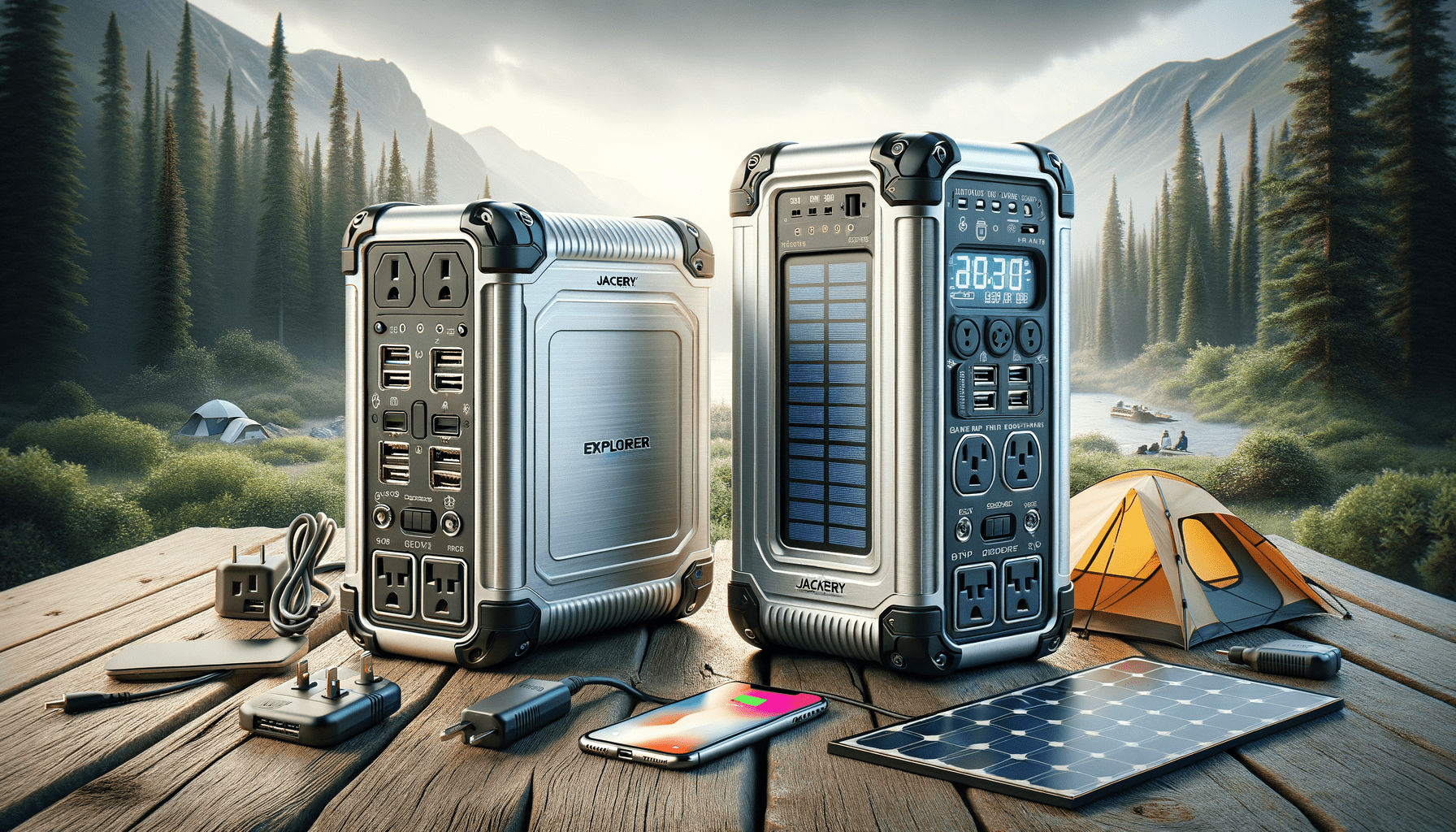When it comes to keeping your devices and small appliances running during trips away from the grid or as a backup power solution, portable power stations have become indispensable. In this article, we’ll dive deep into a technical comparison between two popular models: the Jackery Explorer 1000 and the EcoFlow Delta Max. Whether you’re gearing up for outdoor adventures or preparing for emergency situations, finding the right portable power station can be quite a task. But fret not! We’re here to break down everything from battery capacity to recharge times to help you make an informed decision.
Introduction to Portable Power Stations
Portable power stations are the go-to power sources for camping trips, RV adventures, and as part of a home emergency kit. They can power almost anything, from smartphones to refrigerators, making them versatile companions for modern living. Key factors to consider when choosing a power station include the battery capacity, charging options, output capabilities, and how portable it actually is.
Technical Specification Comparison
| Feature | Jackery Explorer 1000 | EcoFlow Delta Max |
|---|---|---|
| Battery Capacity | 1002Wh | 2kWh (Expandable) |
| Continuous Output | 1000W | 2400W |
| Peak Output | 2000W | 4600W |
| AC Outlets | 3 | Multiple |
| USB Ports | 2 (USB-A) | Multiple (USB-A and USB-C) |
| USB-C Ports | 2 (with PD) | Included |
| DC Outlet | 1 (12V Car Port) | Included |
| Solar Panel Input | 8mm DC | Up to 800W |
| Recharge Times | Solar ~8h, Wall ~7h, Car ~14h | AC (0-80%) ~65min, Fast Dual Charging ~2.5h |
| Recommended Solar Panel | SolarSaga 100W | EcoFlow 400W |
| Battery Lifespan | Up to 500 cycles to 80%+ | N/A |
| BMS (Battery Management System) | Included | Advanced BMS |
| Mobile App | N/A | EcoFlow app for control |
| Weight | 22.04lbs | 48 lbs |
| Warranty | 2-Year | N/A |
Battery Capacity and Output
The Jackery Explorer 1000 provides a reliable 1002Wh capacity, sufficient for charging several devices multiple times. It has a smooth continuous output of 1000W, and during sudden high-power demands, it can surge up to 2000W. On the other hand, the EcoFlow Delta Max starts with a base capacity of 2kWh, significantly more than the Jackery. It’s further expandable, catering to more power-hungry scenarios, and has an impressive continuous output of 2400W with a surge capability of 4600W, making it suitable for larger appliances.
Charging and Solar Capability
Solar capability is key in ensuring you have power during prolonged trips or emergencies. The Jackery 1000 pairs with the SolarSaga 100W panel, requiring about 8 hours for a full recharge. EcoFlow Delta Max, however, offers superior solar input capabilities, accepting up to 800W for faster charging and the ability to combine solar and AC inputs.
Portability and Usage
While both power stations are designed to be portable, the Jackery Explorer 1000 is lighter at 22.04lbs compared to the EcoFlow Delta Max’s 48lbs. However, the larger weight of Delta Max can be justified by its higher power output and capacity. Depending on usage and portability needs, each has its own merits. Jackery is excellent for lighter needs and easy transport, whereas EcoFlow is a powerhouse great for more demanding situations.
Advanced Features and Connectivity
The EcoFlow Delta Max pulls ahead with smart connectivity, providing a mobile app to monitor and control the power station remotely. While the Jackery doesn’t have this feature, it does boast a straightforward and user-friendly interface that many users appreciate for its simplicity.
Final Thoughts
Ultimately, the choice between the Jackery Explorer 1000 and the EcoFlow Delta Max comes down to how you plan to use it and what your priorities are. For light to medium power needs or higher portability, the Jackery could be your ideal choice. If you’re looking for a power station that can handle higher demand, expand capacity, and provide smart monitoring, the EcoFlow Delta Max could be the one for you. Weighing the pros and cons of each will guide you to the perfect portable power companion for your needs.




Leave a Reply